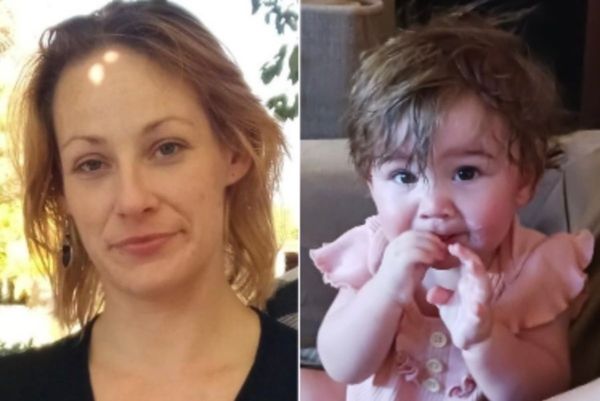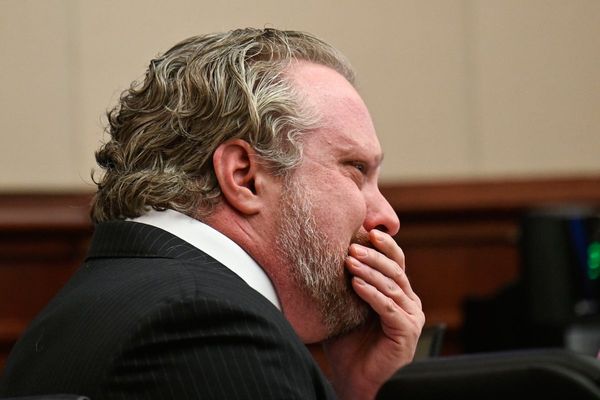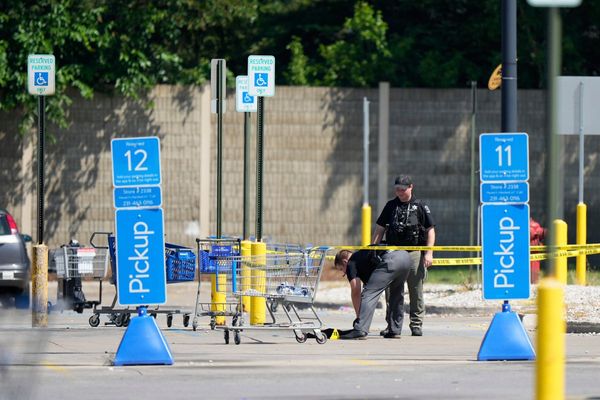On a winter afternoon at the old Methodist church in Swannanoa, North Carolina, a group of young children gathered around a special sandbox. The sand was silky and lavender-scented. The toys inside were carefully chosen: small sections of wooden fence, fist-sized plastic houses, tea lights with battery-operated flames, matchbox-sized police cars and construction machines.
In the wake of Hurricane Helene last autumn, these objects took on new meaning in the town of 5,000 about 10 miles (8,000km) east of Asheville. The storm downed thousands of trees and knocked out power and water for weeks. Driving water, wind and mudslides swept away people, buildings and fences.
Three-year old Antonio Lytle, also known as Fitz, placed a tea light atop of a pile of sand he had made. “The lights are on,” he said.
“The lights are on,” Shelby Ward, an early childhood mental health specialist, repeated. “It’s not dark anymore,” she added.
“Now it’s dark,” Fitz replied, as he tossed the tea light against the opposite side of the tub, adding it to a pile of fence pieces and other toys he had discarded.
“Now it’s dark. The lights went away,” Ward responded, using language to reflect and validate Fitz’s experience.
Both the sandbox and Ward’s careful echoing of Fitz’s language are elements of play therapy, an evidence-based therapeutic approach primarily for children aged three to 12. Its central principle is that children explore their world and communicate primarily through play rather than spoken language.
Ward and her colleague, Lauren Angarano, work at Verner Center for Early Learning, a private non-profit early childhood education center in Asheville. Since November, they have brought these therapy sessions to the broader Swannanoa community – one of the areas hardest hit by the storm – to reach more children traumatized in its wake.
Given that a recent study found that 61% of parents and 57% of caregivers of children under the age of six experienced at least one extreme weather event since 2022, play therapy and other ways to help younger children process natural disasters should be a priority.
But as with many early childhood education centers and providers, funding limits their ability to reach as many children as they would like. They are pursuing grants but have no outside funding, the vice-president of clinical services, Laura Martin, said.
“We’re fighting every day to try to get it out there,” Ward said.
Why play therapy matters
The years from birth to five years old are widely recognized as the most important for a child’s cognitive, emotional and social development. To thrive during this crucial period, children need stable routines and relationships with adults they trust, according to Bradford Wiles, an associate professor and extension specialist in early childhood development at Kansas State University’s College of Health and Human Sciences.
But in the wake of Helene, early childhood education centers were closed for weeks due to damage or lack of power and potable water. Parents were thrust into survival mode, focused on acquiring basic supplies and seeking help to repair and rebuild.
Take Fitz’s mother, Deana Lytle. She and her family have lived in Swannanoa for generations. On 27 September, the morning of the storm, Lytle and Fitz woke up to a house without power and a phone call from her mother, who lived nearby on higher ground, urging her to evacuate. But almost as soon as they arrived at her parents’ house, water reached there, too, in the form of a mudslide.
“I’ve never seen it rain that hard. I’ve never seen the wind blowing the trees that hard. I mean, it was unlike anything I’ve ever imagined,” Lytle said.
Over the following weeks, Lytle could tell that Fitz was not himself. “The first day after the storm, he went through four pairs of pants” even though he was potty-trained, she recalled. He didn’t eat and cried every morning at drop-off when his preschool resumed. And even though their home had only suffered a flooded basement, he refused to sleep there until long after it was ready.
It wasn’t until Lytle brought Fitz to the first play therapy session Ward and Angarano held at the Swannanoa public library that it all clicked. As Fitz played, Lytle read through a handout describing how young children manifest trauma. “I don’t think I realized what kind of effect that could have on someone so young,” Lytle said of the storm.
But the true indication that the play therapy made a difference came that weekend, when Fitz opened up to his mother for the first time about his experience of the storm.
“All of a sudden, he’s like: ‘We left, and it was raining really hard, and I was so scared, and the trees were falling, and Mommy told me it was going to be OK, and there was a police officer, and he told us not to go that way,’” Lytle recalled, adding: “I’d never heard it from his point of view.”
The session had such an impact that Lytle reached out to Ward and Angarano to bring them to the old Methodist church for multiple sessions in January, February and March. More are planned for April.
Beneficial but often inaccessible
According to Jillian Kelly-Wavering, an Asheville psychotherapist who is trained as a registered play therapist (RPT), the region is “pretty well resourced” for trauma therapy for school-aged children, even if most practitioners don’t have the specific RPT credential. As one of the few therapists with specialized training for preschool children, she receives more referrals than she can take and sees a real gap in school-based mental health for the youngest children.
“When you think about a family who you know is struggling to make ends meet, that is not a family that’s going to be able to pull their kid out of preschool for a 12.00 appointment and then bring them back,” she said.
Lytle experienced this firsthand as she tried to get Fitz individual care. She had to enroll him in a pediatric therapy practice for weekly occupational therapy – something he has never needed before – as a way to circumvent the lengthy waitlist for their trauma therapy. Fitz began trauma therapy at the end of February.
The good news is that parents can make a difference, “even if it’s for five or 10 minutes” a day, Kelly-Wavering said. If they notice their children telling storm-related stories using their toys, parents should sit down with them and ask curious questions. “Remember that play is a child’s work and they’re working through things, so it’s not a process you want to stop,” she said. The exception is if a child continuously narrates the same, negative story in a monotone voice. That is a sign that they are stuck and likely need professional intervention.
For parents uncertain about how to talk to their children about the storm, social stories provide a useful script, according to early childhood educator and social story writer Rachel Jamieson. Originally designed to help children on the autism spectrum learn how to manage social situations, these stories now address a range of situations, including natural disasters.
Jamieson and Karin Erickson both attended Warren Wilson College in Swannanoa and worked together at Verner, Jamieson as a teacher and Erickson as a therapist. Now living in Washington DC, the friends felt compelled to help when they saw Helene’s destruction. They penned a Helene-specific social story that they sent as a PDF to Verner and a few mothers. Soon, however, school systems were requesting the material, and thousands of laminated copies were distributed and translated into Spanish.
“We are so grateful for the response,” Erickson said, recalling one mother who reported back that her child stopped screaming at night and began talking about the storm.
Such interventions definitely help. As Wiles noted, however, often “the educators themselves are in survival mode as well.” He added: “Having advanced training and professional development around how to respond to disasters when you’re caring for young children could be extraordinarily helpful.”
When asked how long they would like to hold the play therapy sessions, Ward and Angarano both said at least a year. The Verner staff would also like to hold sessions in more rural areas of the region so that those in early childhood education and mental health deserts can access these benefits.
Experts say that young children are often an afterthought when it comes to disaster recovery, in large part because the importance of early childhood education itself is simply not recognized. In the first two disaster relief bills passed by the North Carolina general assembly, for instance, only $10m of a combined $877bn went to early childhood education. “It really does require some subsidy from the community, because the state and federal governments aren’t going to do it,” Wiles said.







